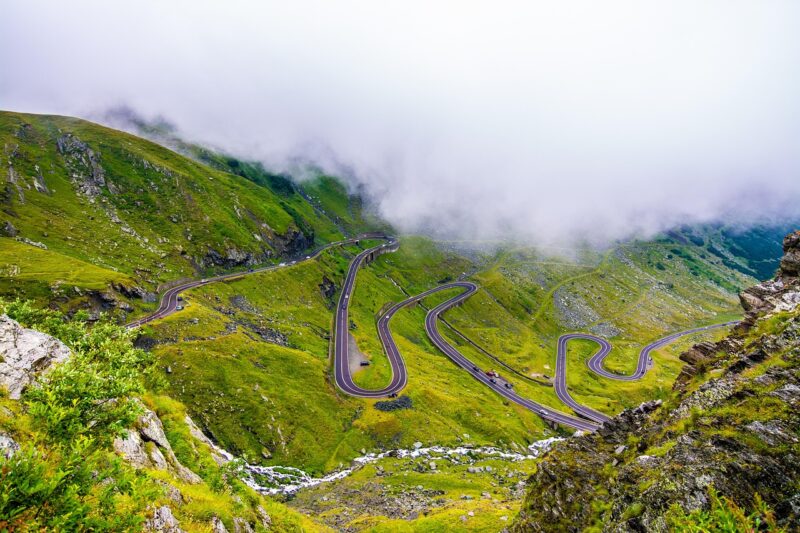
Travel is more than just moving from one place to another; it’s a journey through time, culture, and the stories that have shaped our world. The historic routes we traverse allow us to experience the legacies of those who walked before us. From ancient trade paths to scenic byways, these iconic routes provide an insight into human civilization and are a testament to our unyielding desire to explore. In this article, we’ll take you through some of the most iconic historical routes around the globe, examining their significance, the adventures they offer, and the destinations they lead us to.
1. The Silk Road
The Silk Road is perhaps the most renowned historical trade route that connected East and West. Stretching over 4,000 miles, it linked China, Central Asia, the Middle East, and Europe. This ancient highway was not just a single road; it was a network of routes that facilitated the exchange of silk, spices, precious metals, art, and ideas.
**Significance**: The Silk Road was vital for cultural interaction and the spread of inventions like paper and gunpowder. It played a key role in the development of the cultures along the route, influencing art, religion, and cuisine across continents.
**Travel Highlights**:
– **Xi’an, China**: The eastern terminus of the Silk Road, famous for the Terracotta Army.
– **Samarkand, Uzbekistan**: A hub of trade and culture, known for its stunning architecture and vibrant bazaars.
– **Istanbul, Turkey**: The western endpoint where the rich history of both Europe and Asia converges.
Exploring the Silk Road today offers travelers a rich tapestry of experiences—bustling markets, historical landmarks, and breathtaking landscapes, reminding us of a time when trade united disparate cultures.
2. The Inca Trail
Machu Picchu is one of the most famous archaeological sites in the world, and the Inca Trail to this ancient city is a journey through breathtaking landscapes and significant historical paths. This trail, used by the Incas to access Machu Picchu, offers hikers a glimpse into the advanced civilization of the Incas.
**Significance**: It’s not just the destination that counts but the route. The Inca Trail features ruins, high mountain passes, and diverse ecosystems. It showcases the Incan engineering prowess, with steps carved out of stone and roads that have withstood centuries.
**Travel Highlights**:
– **Km 82 to Huayllabamba**: The first leg provides stunning views of the lush Sacred Valley.
– **Dead Woman’s Pass**: The highest point at 4,215 meters, offering panoramic views.
– **Machu Picchu**: The iconic 15th-century Incan citadel, nestled in the Andes Mountains.
Hiking the Inca Trail not only allows you to experience breathtaking scenery but also serves as an immersion into the intricate tapestry of Inca history.
3. Route 66
Known as the “Main Street of America,” Route 66 stretches approximately 2,448 miles from Chicago to Santa Monica. Established in 1926, it symbolizes the freedom of the open road and the American spirit of exploration.
**Significance**: This route is woven into the fabric of American culture, representing the migration during the Dust Bowl era and the post-World War II road trip boom. Towns along this iconic highway have preserved a sense of nostalgia that reflects mid-20th-century Americana.
**Travel Highlights**:
– **Chicago, Illinois**: The starting point where travelers can explore its rich architecture and history.
– **Santa Monica, California**: The endpoint featuring the famous pier and beach.
– **The Route 66 Museum, Victorville**: Showcases memorabilia from the golden age of road travel.
Embarking on a road trip along Route 66 is about more than just reaching the destination; it’s a journey filled with quirky roadside attractions, diners, and small towns ripe for exploration.
4. The Grand Tour
Originating in the 17th century, The Grand Tour was a traditional trip around Europe undertaken by mainly upper-class young men to broaden their cultural horizons. This itinerary typically included stops in France, Italy, and England, focusing on art, architecture, music, and history.
**Significance**: The Grand Tour was instrumental in shaping Western culture, establishing the importance of travel and education in forming a well-rounded individual. It influenced art, literature, and cultural understanding significantly.
**Travel Highlights**:
– **Paris, France**: Home to iconic art galleries like the Louvre and breathtaking architecture like Notre Dame.
– **Rome, Italy**: The Colosseum, Vatican City, and a plethora of historical artifacts.
– **London, England**: Rich in history with landmarks like the Tower of London and Buckingham Palace.
Following in the footsteps of the Grand Tour allows modern travelers to appreciate how art, literature, and historical sites have evolved over centuries, providing a deeper understanding of European heritage.
5. The Oregon Trail
The Oregon Trail, spanning about 2,170 miles, was a historic east-to-west route that facilitated mass migration in the 19th century. Pioneers used this trail to travel to the Oregon Territory in search of good land and opportunities.
**Significance**: The Oregon Trail is emblematic of the westward expansion in the United States, representing the spirit of adventure and the pursuit of the American Dream. It’s a poignant reminder of the challenges faced by early settlers, including diseases, harsh weather, and treacherous terrain.
**Travel Highlights**:
– **Independence, Missouri**: The trail’s starting point filled with museums and historic sites.
– **The National Oregon/California Trail Center**: An interactive experience of pioneer life.
– **Oregon City, Oregon**: The endpoint featuring history tied to the settlement of the West.
Traveling the Oregon Trail invites exploration of America’s pioneer past, with numerous historical markers and attractions that pay homage to the perseverance of those early settlers.
Conclusion
Traveling through history allows us to connect deeply with the past. The iconic routes we explore not only showcase breathtaking locations but also tell stories of human innovation, culture, and resilience. Whether it’s the grandeur of the Silk Road or the rugged adventures on the Oregon Trail, these routes provide invaluable insights into our shared heritage and invite us to continue exploring and learning from the world around us. So, take your bags, choose a route, and embark on your historical journey; you never know what stories await just around the corner.







